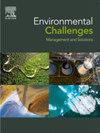Energy subsidies, consumption patterns and perceptions in Qatar: Comparative Analysis on citizen and non-citizen residential energy use
Q2 Environmental Science
引用次数: 0
Abstract
Qatar’s exceptional per-capita electricity use—shaped by its harsh climate and subsidized tariffs—places efficiency gains at the center of national climate strategy. Drawing on utility-billing records and a survey of 2,652 households, this study shows that citizens in subsidized housing consume 50-100 % more power than non-citizens or citizens in market-priced homes, with the gap widest during the peak summer period. Survey responses underscore the behavioral dimension: 72 % of non-citizens cite cost savings as their main reason for conserving energy, whereas only 35 % of citizens do so; willingness to enroll in demand-response schemes stands at 60 % for non-citizens versus 40 % for citizens. These patterns highlight how subsidies shape consumption norms and signal the need for group-specific policy tools. A combined package of awareness campaigns, legal adjustments and targeted financial incentives is therefore recommended to curb residential demand while protecting equity and fiscal stability—an approach that can inform reforms across other high-consumption, subsidy-driven economies.
卡塔尔的能源补贴、消费模式和观念:公民和非公民住宅能源使用的比较分析
严酷的气候和补贴的电价造就了卡塔尔非凡的人均用电量,这使得提高能源效率成为国家气候战略的核心。根据公用事业账单记录和对2652户家庭的调查,这项研究表明,居住在补贴住房中的公民比非公民或居住在市场价格住房中的公民多消耗50%至100%的电力,在夏季高峰期间差距最大。调查结果强调了行为层面:72%的非公民将节约成本作为他们节约能源的主要原因,而只有35%的公民这样做;非公民参加需求响应计划的意愿为60%,而公民为40%。这些模式突出了补贴如何影响消费规范,并表明需要针对特定群体的政策工具。因此,建议采取宣传活动、法律调整和有针对性的财政激励措施相结合的一揽子措施,以抑制住宅需求,同时保护公平和财政稳定——这种方法可以为其他高消费、补贴驱动型经济体的改革提供参考。
本文章由计算机程序翻译,如有差异,请以英文原文为准。
求助全文
约1分钟内获得全文
求助全文
来源期刊

Environmental Challenges
Environmental Science-Environmental Engineering
CiteScore
8.00
自引率
0.00%
发文量
249
审稿时长
8 weeks
 求助内容:
求助内容: 应助结果提醒方式:
应助结果提醒方式:


